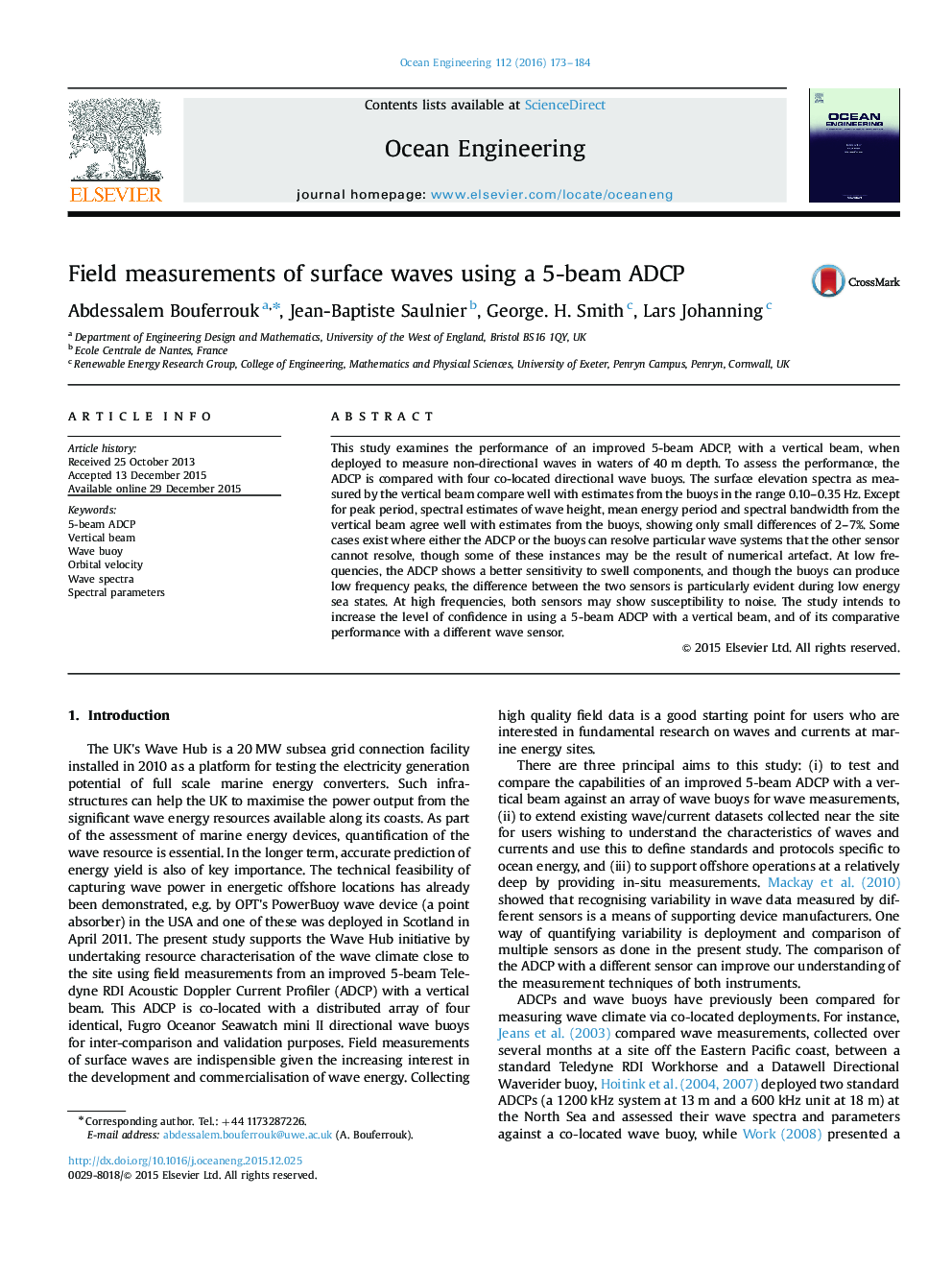| Article ID | Journal | Published Year | Pages | File Type |
|---|---|---|---|---|
| 1725170 | Ocean Engineering | 2016 | 12 Pages |
•A vertical ADCP beam produces spectra (up to 1 Hz) similar to those from co-located wave buoys.•At low frequencies and Hm0<1 m the ADCP has better sensitivity to swell components.•At high frequencies the ADCP and wave buoys may show susceptibility to noise.•Both sensors agree on spectral ratio and spectral parameters, except peak period.•Some variability is observed from field measurements of ADCP and wave buoys.
This study examines the performance of an improved 5-beam ADCP, with a vertical beam, when deployed to measure non-directional waves in waters of 40 m depth. To assess the performance, the ADCP is compared with four co-located directional wave buoys. The surface elevation spectra as measured by the vertical beam compare well with estimates from the buoys in the range 0.10–0.35 Hz. Except for peak period, spectral estimates of wave height, mean energy period and spectral bandwidth from the vertical beam agree well with estimates from the buoys, showing only small differences of 2–7%. Some cases exist where either the ADCP or the buoys can resolve particular wave systems that the other sensor cannot resolve, though some of these instances may be the result of numerical artefact. At low frequencies, the ADCP shows a better sensitivity to swell components, and though the buoys can produce low frequency peaks, the difference between the two sensors is particularly evident during low energy sea states. At high frequencies, both sensors may show susceptibility to noise. The study intends to increase the level of confidence in using a 5-beam ADCP with a vertical beam, and of its comparative performance with a different wave sensor.
